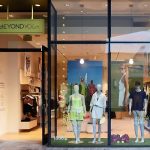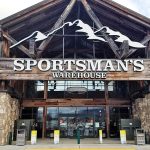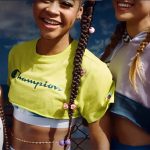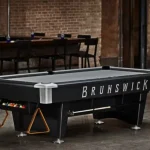Two years ago, Patagonias CEO Michael Crooke issued a challenge to the outdoor industry to become the leaders in environmental sustainability. Apparently the industry took this message to heart, because this years OR Winter Market was a showcase of innovative, eco-conscious ideas in footwear, apparel, and hardgoods — and booths. Nearly every vendor on the floor invested into the R&D of more environmentally friendly design and development of their product line. The innovations varied from new organic, chemical-free wicking treatments, to new garment recycling programs, to glue-less shoe construction.
While the industry still has a long way to go, it is clear environmental and social sustainability are taking a front seat in the continuous push towards newer and better products. At the same time, companies on the OR show floor are still able to push the boundaries of technical innovation and even lead the market in a few fashion trends.
OR Winter Market closed its doors as the most successful show to-date. The newly renovated Salt Palace with a larger floor plan hosted more vendors than ever before, and this attracted more attendees and buyers. There were 815 exhibitors, including 274 new exhibitors and 152 expanded booth presentations. A record 17,973 total attendees visited OR Winter Market this year, up 24% from 2006. Of these attendees, 5,602 were buyers, up 14% from 2006.
Patagonia made headlines around the world with their announcement that they will be accepting all Polartec garments ever made into their polyester recycling program, which was created in conjunction with Teijin. This means that any of the millions of TNF Denali Jackets hanging in collegiate dorm closets, and the thousands of Cloudveil Gridlock Jackets and ArcTeryx Delta AR jackets could be recycled into Patagonia products as early as next year. Malden Mills has created enough Polartec fabric that, if recycled, it could make 300 million garments.
Marmot showed off an expanded apparel line with depth in both technical and fashion styles. While stressing a commitment to its core high-performance offerings, there is no doubt that Marmots commitment to crossover (albeit highly technical) street-wear style is also growing. A company exec called the urban-performance styles “a direction we are headed in carefully.”
The North Face has doubled in size since it showed up for ORWM in 2001 by increasing its domestic and international distribution. TNF feels that they are now “on the map” as a performance endurance running brand. In the spring of 2008, the company will introduce a re-vamped footwear line that will be closer to the road running market and use more sustainable materials. TNF has long been recognized as a leader in social awareness programs, but there has been a slight gap in environmental efforts. Going forward, TNF president of the Americas, Steve Rendle, said that the company will be looking at more eco apparel construction and “working to bring our environmental message up to the same level as our social message.”
Timberlands outerwear offerings are following a universal approach, and are being designed for on-or-off mountain use. New technology in Timberlands outerwear includes the use of higher end RiRi zippers, along with welded seams on its down pieces. Not surprisingly, Timberland also continues to leverage its SmartWool brand, incorporating SmartWool technology into Timberland outerwear with both fashionable and technical touches.















